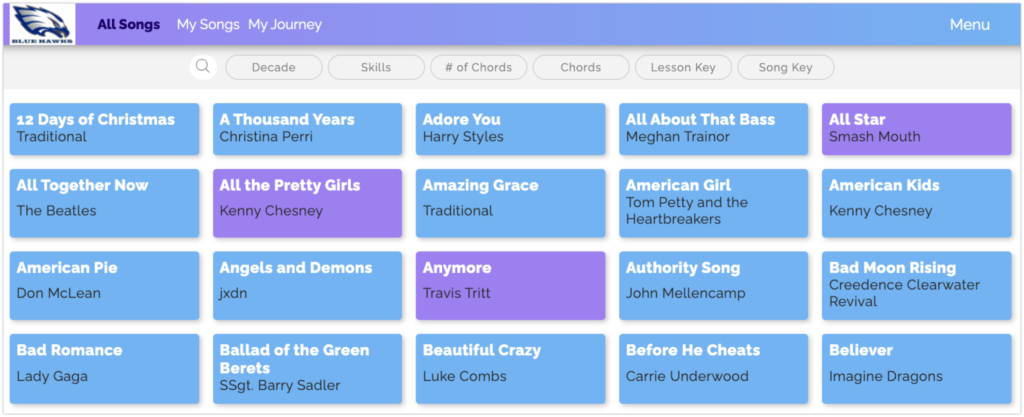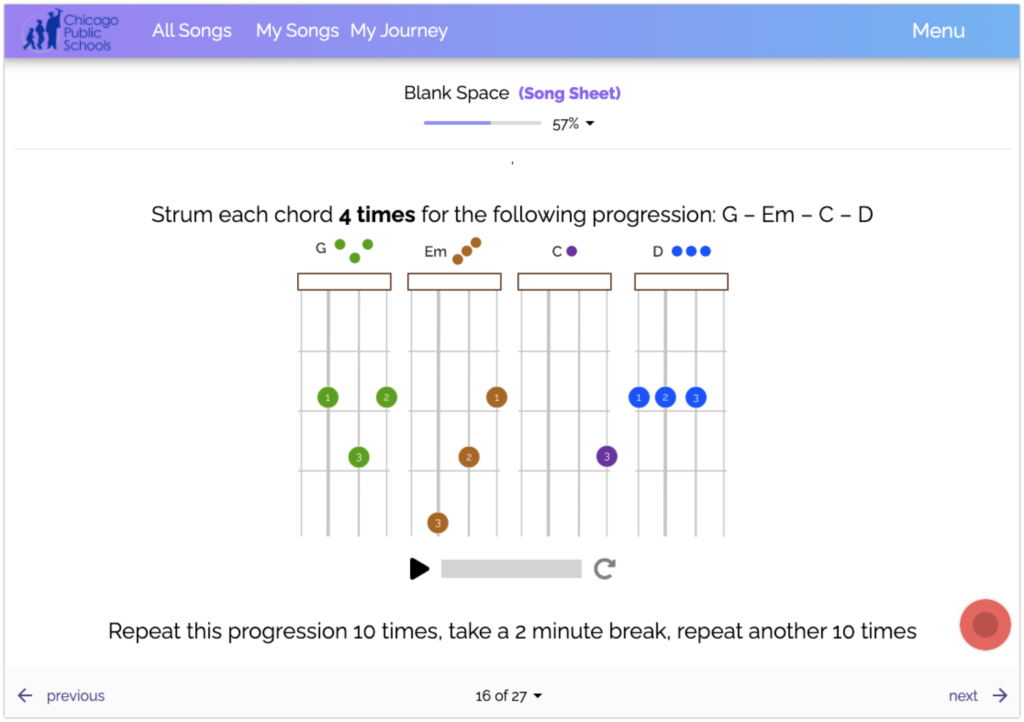Increasing student engagement is one of the biggest challenges in music education, especially after the disconnected, weekly-schedule-changing, distant 20/21 school year. Our goal as educators should be 100% student engagement…but is it even realistic to expect that? Yes it is.
One of our core values at Moosiko is to help schools and districts achieve 100% student engagement. Our progress toward complete engagement over the last 2 years has teacher and district leaders taking notice. Read on to learn what tools and tricks we use to harness intrinsic motivation so you can implement them in your class.
Internal Joy vs External Reward
Our core learning philosophy at Moosiko is built on the foundation of intrinsic motivation. Before we can get into that, we first need to understand what that even means, and how it’s semi-evil cousin, extrinsic motivation, differs. Intrinsic and extrinsic factors motivate us to take action and engage in activities, such as playing chess with friends, but the mechanism of how is very different.
- Intrinsic Motivation comes from within. It drives you to act or behave because you enjoy it and it brings satisfaction.
- Extrinsic Motivation comes in external forms. It drives you to act or behave in order to gain a reward.
An intrinsically motivated person plays chess because it’s fun and they enjoy the challenge. An extrinsically motived person plays chess to win a competition or win money.
Both motivators work at creating action but research shows that extrinsic motivators typically create strong, short-term reinforcers but come with negative long-term consequences such overjustification effects, which actually eat away at intrinsic motivation over time. A big reason why teachers often get frustrated with students who are not engaged is because schools are rampant with extrinsic motivators:
- Test / quiz scores
- Grades
- Gold stars
- Participation scores
- Time out
- Detention
These factors have their place but we can’t expect them to get students to care. For that we’ll need to harness intrinsic motivators.
Beat of Your Own Drum
How does this translate into your music curriculum and into your classroom? Over the past two years, we’ve learned that these three attributes are the key to harnessing student motivation in music:
- Fun & Relevant: Personal music preferences differ greatly from person to person. Genre, era, culture, age, and generation are just some aspects of our personal tastes. No two people have the exact same taste in music. It is important to recognize this fact because if we want to make music fun, it needs to be relevant and personal to each and every student.
- Autonomy: Students, and teachers too, like to have control over their craft, giving them a sense of ownership and a stake in the outcome. Creating these positive feedback loops gives students access to explore their mistakes and celebrate their successes as they guide themselves to a common goal.
- Purpose: We all hate going through the motions. This is perhaps the most important factor for harnessing intrinsic motivations. By surveying students and digging into their “why”, we can leverage their internal motivations to help them accomplish great things.
Here is how we incorporate each factor into Moosiko.
Fun & Relevant

Moosiko Song Library
We have over 300 song lessons that span the last 70 years of music and include a diverse set of genres such as classic rock, traditional, holiday, hip hop, country, pop, punk, and rap…just to name a few. Our goal is to build tens of thousands of song lessons in order to ensure every student can find something they love. We believe the diversity of content on Moosiko needs to match the diversity of our student populations.
We do this by allowing our customers to request songs directly right through the product. To be honest it’s hard to keep up. Here are just a few examples of student requests and why they want to learn these songs:
Blue Bird by Naruto Shippuden: “It is a very popular song in the anime world, more specifically, from the anime Naruto Shipuden. This song is from the J-pop genre and could make Moosiko a more diverse place.”
Time Adventure by Rebecca Sugar: “It is from the Cartoon Network show Adventure Time. It’s my favorite song and the song makes me cry every time I listen to it.”
Put Your Head on my Shoulder by Paul Anka: “I’ve always loved older songs and I like using this one on TikTok.”
We would have never thought about sourcing music from anime, video games, a cartoon, and TikTok. Yet this is where students are getting exposed to music and we need to be responsive to ensure it’s relevant for teenagers. It’s also worth noting that music from other countries and cultures is just as accessible as the music coming out of Hollywood. We’ve got Mexican pop, KPOP, and JPOP (Japanese pop) that are written in their native languages to attract students that listen to this music in their homes and communities.
Autonomy
“It says I have to practice for 3 minutes Mrs. Rose”, one student said to her teacher when Mrs. Rose had asked the student to skip ahead. The teacher, a Moosiko customer, later confessed it made her laugh saying that sometimes students sometimes listen to instructions on their computer more-so than their teacher. Mrs. Rose wasn’t mad at all, she was excited about anything that got more students engaged and practicing.
Autonomy is a core element to intrinsic motivation and is a prime benefit of asynchronous learning. The reason we’re building thousands of song lessons on the Moosiko library is so students can choose something they like without anyone telling them what to learn. Each lesson allows students to progress at their own pace. If they know something they can skip it and learn something new. If they need more time to practice, they can take what they need. This sense of choice and autonomy boosts internal motivation in a big way.

Moosiko Song Lesson Allows Students to Move at Their Own Pace
Purpose
Listening, playing and especially creating music is a way for all of us to express our identity. Purpose is perhaps the strongest of the intrinsic motivators and there are two ways we tap into student’s musical desires and purpose.
- We ask them at the beginning of the class through surveys (these sharable surveys are available for teachers in our Beginning Guitar Curriculum)
- When students request new songs, we ask them why they want to learn this specific song
These two approaches help teachers understand a macro and micro view of purpose. For the macro view:
- If the student comes from a musical family or community
- Any previous history of music making
- Comfort, or discomfort, in playing in front of others (understanding student fears is important too)
- Are they interested in playing individually, with others, or in a larger band?
- Why they took this class
- What they are hoping to learn and accomplish by the end

We also capture a micro view as students request songs. These tend to be very specific but shine a light into the deeper, often emotional, purpose of wanting to learn music. Here are a few examples:
- “This is my dad’s favorite song. He always sings it to my mom and I want to learn how to play it on his old guitar.”
- “It’s my friends favorite and she’s in the hospital”
- “it is a very beautiful song with a great message of hope”
These micro examples of purpose tend to fall into the following categories:
- Play it for a friend or family member
- Want to challenge themselves
- It is their favorite song or artist
- “Meaningful to me”, part of their identity
- Inspires a sense of hope, beauty, or peace
- Part of their culture
Understanding the macro and micro student purposes paints a holistic and very detailed picture of why they are here, in your class, learning music. As educators we want to reinforce these throughout the year to keep reminding students of what is in it for them.
The Foundation of Engagement
Don’t worry, we should still keep our grades, gold stars, and (in some cases) detention. Research shows that it is the right balance of short-term extrinsic motivators balanced with the long-term intrinsic ones that produce the best results. They key is to tap into and understand intrinsic levers on day one so you can build a strong foundation of engagement over the entire semester or year. Praise and accomplishments in the form of grades and rewards can help course correct and reinforce when needed, but it is the reminder of wanting to surprise your mom with uke song on her birthday that will ultimate get students to act and enjoy the craft of making music.
